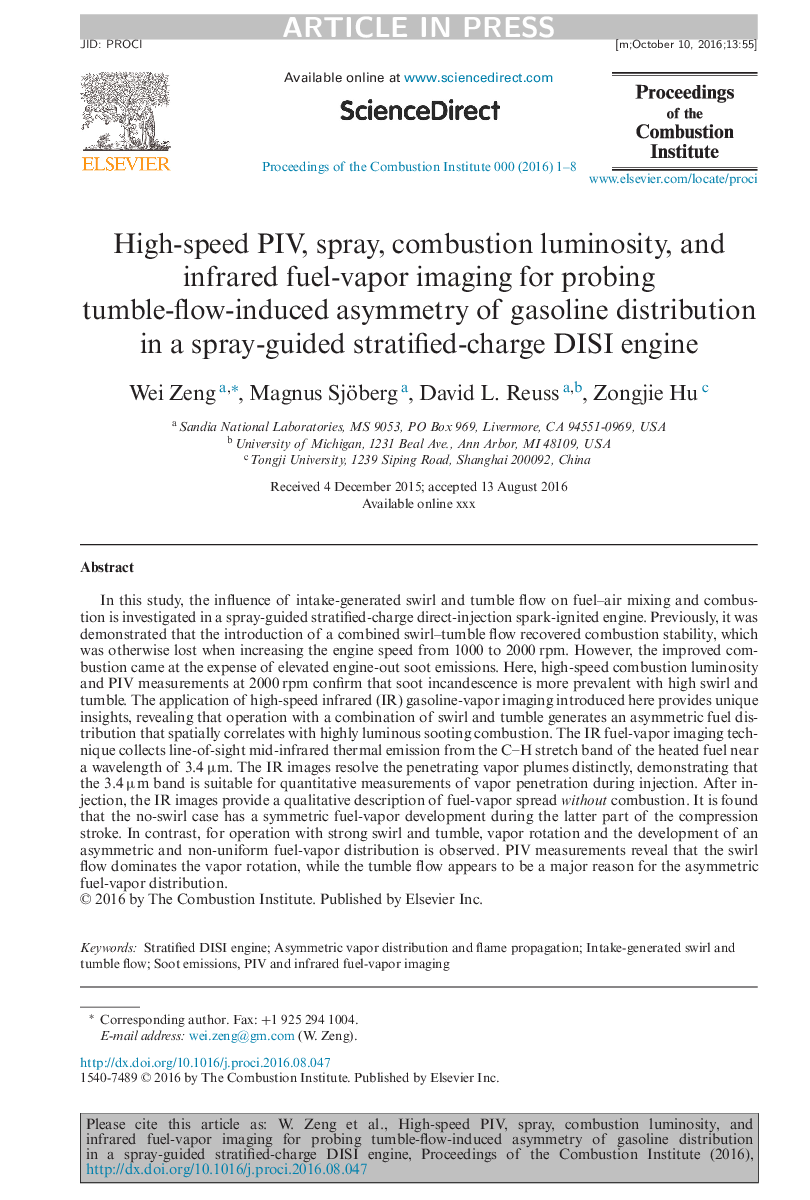| کد مقاله | کد نشریه | سال انتشار | مقاله انگلیسی | نسخه تمام متن |
|---|---|---|---|---|
| 4915399 | 1427915 | 2017 | 8 صفحه PDF | دانلود رایگان |
عنوان انگلیسی مقاله ISI
High-speed PIV, spray, combustion luminosity, and infrared fuel-vapor imaging for probing tumble-flow-induced asymmetry of gasoline distribution in a spray-guided stratified-charge DISI engine
دانلود مقاله + سفارش ترجمه
دانلود مقاله ISI انگلیسی
رایگان برای ایرانیان
موضوعات مرتبط
مهندسی و علوم پایه
مهندسی شیمی
مهندسی شیمی (عمومی)
پیش نمایش صفحه اول مقاله

چکیده انگلیسی
In this study, the influence of intake-generated swirl and tumble flow on fuel-air mixing and combustion is investigated in a spray-guided stratified-charge direct-injection spark-ignited engine. Previously, it was demonstrated that the introduction of a combined swirl-tumble flow recovered combustion stability, which was otherwise lost when increasing the engine speed from 1000 to 2000 rpm. However, the improved combustion came at the expense of elevated engine-out soot emissions. Here, high-speed combustion luminosity and PIV measurements at 2000 rpm confirm that soot incandescence is more prevalent with high swirl and tumble. The application of high-speed infrared (IR) gasoline-vapor imaging introduced here provides unique insights, revealing that operation with a combination of swirl and tumble generates an asymmetric fuel distribution that spatially correlates with highly luminous sooting combustion. The IR fuel-vapor imaging technique collects line-of-sight mid-infrared thermal emission from the CH stretch band of the heated fuel near a wavelength of 3.4 µm. The IR images resolve the penetrating vapor plumes distinctly, demonstrating that the 3.4 µm band is suitable for quantitative measurements of vapor penetration during injection. After injection, the IR images provide a qualitative description of fuel-vapor spread without combustion. It is found that the no-swirl case has a symmetric fuel-vapor development during the latter part of the compression stroke. In contrast, for operation with strong swirl and tumble, vapor rotation and the development of an asymmetric and non-uniform fuel-vapor distribution is observed. PIV measurements reveal that the swirl flow dominates the vapor rotation, while the tumble flow appears to be a major reason for the asymmetric fuel-vapor distribution.
ناشر
Database: Elsevier - ScienceDirect (ساینس دایرکت)
Journal: Proceedings of the Combustion Institute - Volume 36, Issue 3, 2017, Pages 3459-3466
Journal: Proceedings of the Combustion Institute - Volume 36, Issue 3, 2017, Pages 3459-3466
نویسندگان
Wei Zeng, Magnus Sjöberg, David L. Reuss, Hu Zongjie,